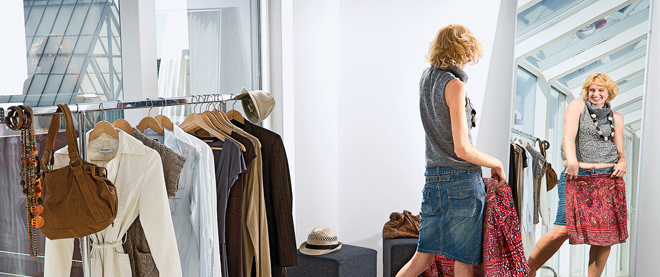The clothes psychologist is in
What you wear can reveal inner turmoil, so maybe it’s time for a closet analysis
Share

What you wear reveals more about your inner turmoil than you think, says Jennifer Baumgartner, a psychologist whose Washington, D.C., practice involves making house calls to analyze wardrobes.
Baumgartner charges $150 an hour for in-person closet analysis plus treatment that often involves Cognitive Behavioural Therapy (CBT) to help solve emotional issues that cause clothing ruts, like “the perfectionist woman” who wears only neutral colours because she’s afraid of making a fashion error.
“Most wardrobe mistakes have nothing to do with clothes but are almost always a symptom of some deeper issue,” writes Baumgartner in her new book, You Are What You Wear: What Your Clothes Reveal About You.
“Closet dysmorphia” is a common problem. Baumgartner gives the example of “Ricki,” a mom who dressed in oversized stretch pants. “Ricki chose clothes for the body she thought she had—that of a ‘big, ugly whale of a woman.’ No one would have known that hidden within the folds of Ricki’s pants was a figure worthy of Marilyn Monroe.”
Baumgartner had Ricki empty the contents of her closet onto her bed and try on each item. Ricki realized she had begun covering up her body after the birth of her first child.
To challenge Ricki’s way of seeing herself, Baumgartner set up experiments using CBT, “the theory that faulty thoughts negatively impact emotions and behaviours.” In one, Baumgartner took Ricki to the mall dressed in her daughter’s tank top and a tight pair of jeans to confront Ricki’s fears using exposure therapy. “I knew this would be the perfect place to make Ricki the most uncomfortable. If you can survive being stared at and possibly judged by a group of adolescent girls, you can handle almost anything.” Ricki wasn’t happy, but she realized “no one cared that her arms were soft.”
Back at Ricki’s house, Baumgartner practised a technique known as deflection, teaching Ricki how to respond to negative feedback. “I asked Ricki to list all of the possible criticisms that others could hurl at her.” “Fat,” “heifer,” “disgusting” and “slob” were a few of the taunts Ricki listed. “After writing these down, I sat across from her and, in the best mean girl voice I could muster, I called her every name on the list.”
Next, Baumgartner asked Ricki to generate responses to the taunts to help her maintain a sense of dignity. They used phrases such as “I’m sorry you feel that way” and “You have a right to your opinion but your comments are hurtful.”
Baumgartner then shopped with Ricki for modest turtlenecks and fitted, flared pants, as well as colourful wrap dresses made of stretch fabrics that “accentuated her bust, waist, and legs, but camouflaged her stomach.”
Women who dress like teenagers have likely swapped maternal roles for friendship roles with their daughters, writes Baumgartner, who gives the example of 48-year-old “Frances,” who approached her one day wearing a pink terry-cloth jumpsuit with the words “Girl Power” written across the back in rhinestones. Baumgartner conducted parenting exercises, and then photographed the woman to show her she looked like she was “in costume for a high-school play.”
For “Kate,” dressing inappropriately was the problem, and her employer complained about her short black skirt and red stilettos. She had developed early and had a love-hate relationship with her body. “She loved the power it had over others, yet hated that her intelligence and humour were ignored,” Baumgartner writes. “Kate recognized that her wardrobe was stuck in adolescence because she had still not worked through her adolescent trauma issues.”
The psychologist took her to a tailor to teach her appropriate fit. “Bending, leaning over and sitting should not reveal your underwear,” she says. With her new wardrobe, Kate found people treated her differently. “She had her chair pulled out for her and her door opened, but did not get prodded, poked or grabbed.” In this way, identifying internal reasons for clothing choices helps improve your wardrobe and can change your life.